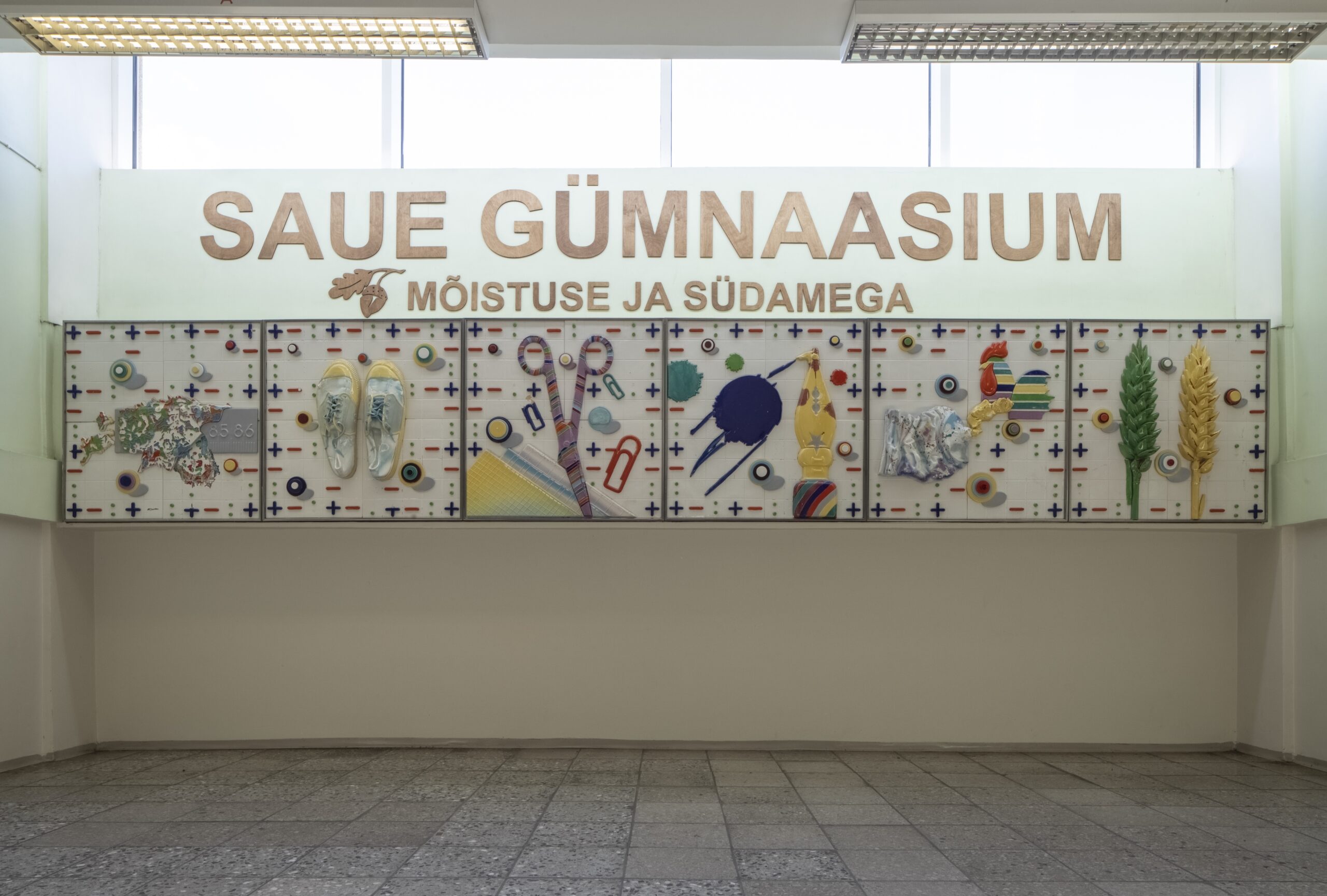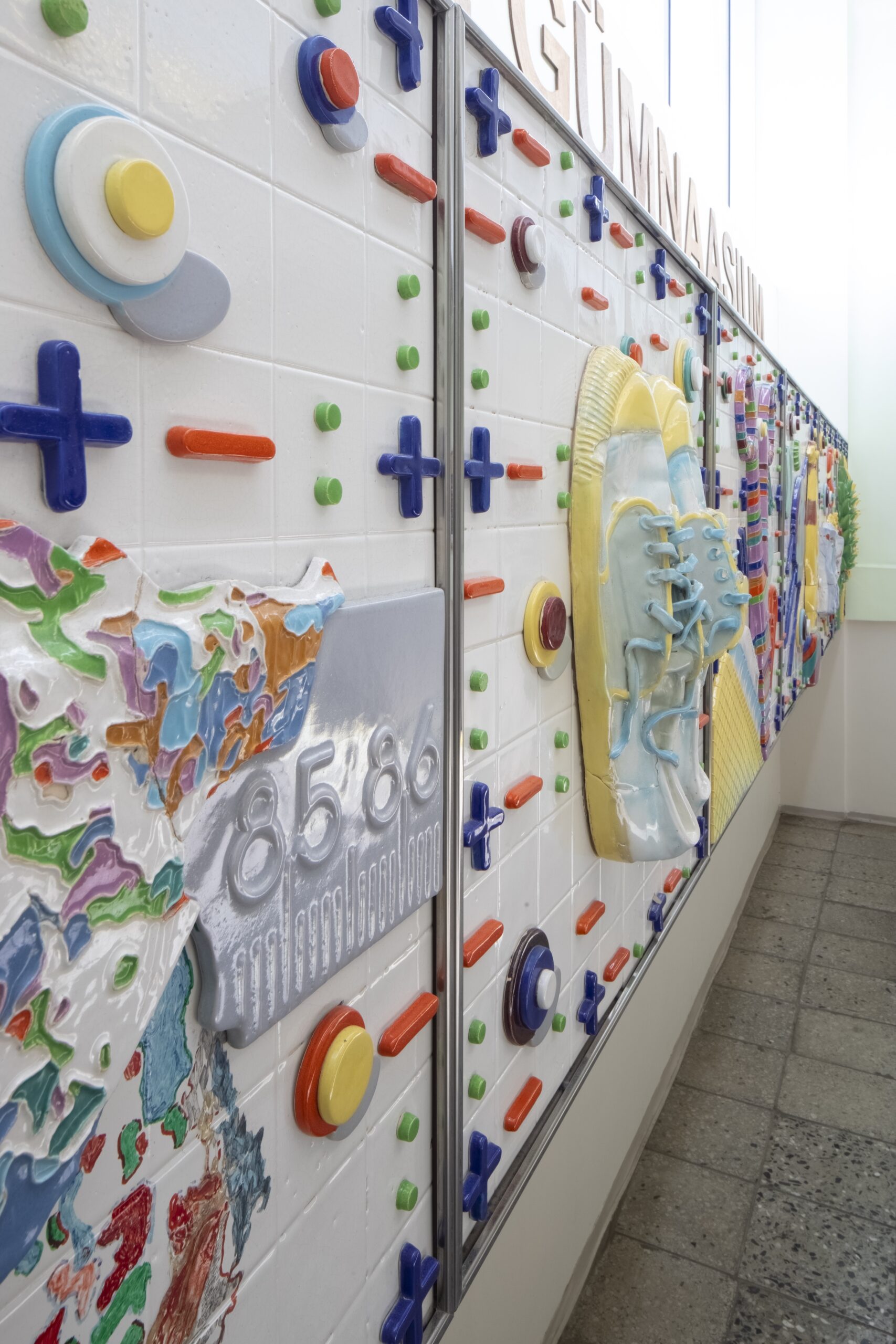Ceramic Pannel in Saue Gymnasium
Year of completion: 1986
Address: Harju County, Saue, Nurmesalu 9
Author Mai Järmut
Low-fire ceramics
576 x 96 cm
Not listed as a cultural monument
Implementing an artwork into the rooms of general education schools has been quite a routine practice. The pannel was commissioned into the modern school that opened in 1985 by its first and long-term principal Jaan Palumets, who turned to the art supply factory ARS, through which most public space art commissions of the time were conducted. ARS had an excellent base for creation and construction, and the capability to realize the ideas of artists.
Mai Järmut got the opportunity to work on the commission, as she had expressed that she would gladly undertake such a project. The piece realized fast, hardly a year between the idea and its completion. A spot for the prospective artwork had been picked out in the new building by the director – it would be displayed on a 1 x 6 metre large space on the wall of the main staircase’s first landing. Järmut’s design was approved and the Saue school got itself a ceramic pannel comprising six modules installed inside metal frames. Järmut, known already at the time as a ceramist with a monumentalist and pop-like style, designed a narrative image consisting of symbols related to modern education. It was important to her that the piece would reflect school life and be understandable to the children. This is why the chalk-white glazed tile squares resembling paper display a map of the country on top of a ruler, next to which are shiny, slightly worn light blue tennis shoes, then scissors, paperclips, colourful inkblots, and a fountain pen (which is not a cloying anachronism, those really were still used at the time), followed by a rooster as seen on the covers of ABC-books, squeezed out of a paint tube. The story ends with ears of grain, alluding to the region – indeed, companies focusing on agriculture operated in Saue. The image depicts barley, the authentic appearance of which the artist took very seriously, avoiding any generalisation in its modelling. All parts are framed by the mathematical sign system. The whole pannel is made in saturated clear colours unusual at the time, which are brought into even more effect by the striped pattern on the depicted symbolic pieces.
The pannel resides in its original location, and although at times there have been attempts to fix it with resources at hand, it has remained quite intact. The plan from some years ago to find the piece a new location in the building has luckily not been seen through.
Kai Lobjakas










